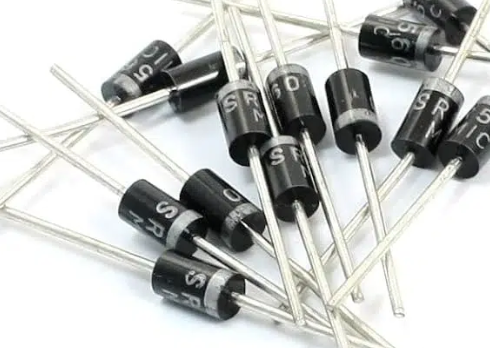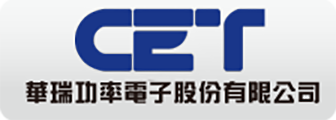Understanding Schottky Diode : A Comprehensive Guide
Schottky diode is semiconductor devices with a unique structure and properties that make it indispensable in various electronic applications. Understanding their principles of operation, advantages, and applications is crucial for engineers and enthusiasts alike. This guide aims to provide a detailed overview of Schottky diodes to help readers grasp their significance in modern electronics.

What is a Schottky diode?A Schottky diode, named after the physicist Walter H. Schottky, is a type of semiconductor diode with a unique construction and operating principle. Schottky diodes are also commonly referred to as Schottky barrier diodes or hot carrier diodes. Unlike conventional p-n junction diodes, which consist of a junction between p-type and n-type semiconductor materials, Schottky diodes are formed by the junction of a metal (often a transition metal like platinum or tungsten) with a semiconductor material (usually silicon).
What is a Schottky diode used for?Schottky diodes find application in a wide range of electronic circuits. They are commonly used in:
Rectification circuits: Schottky diodes are efficient rectifiers due to their low forward voltage drop, making them ideal for converting alternating current (AC) to direct current (DC) in power supplies and voltage regulators.
High-frequency applications: Their fast switching speed and low junction capacitance make Schottky diodes suitable for high-frequency applications such as RF (radio frequency) detectors, mixers, and oscillators.
Protection circuits: Schottky diodes are often employed to protect sensitive electronic components from voltage spikes and reverse polarity damage in circuits such as overvoltage protection and reverse current protection.
What are the advantages and disadvantages of Schottky diode?Advantages:
Low forward voltage drop: Typically around 0.3 V, leading to lower power losses and higher efficiency in rectification applications.
Fast switching speed: Due to their majority carrier conduction mechanism, Schottky diodes have minimal minority carrier storage time, resulting in rapid switching characteristics.
High temperature operation: Schottky diodes can operate at higher temperatures compared to conventional silicon diodes.
Compact size: Their smaller junction area and simpler construction allow for compact designs in integrated circuits.
Disadvantages:
Lower reverse breakdown voltage: Schottky diodes typically have lower reverse breakdown voltage ratings compared to silicon diodes, limiting their use in high-voltage applications.
Higher leakage current: Schottky diodes exhibit higher reverse leakage current compared to silicon diodes, which may be undesirable in certain low-power applications.
Sensitivity to temperature variations: The forward voltage drop of Schottky diodes is sensitive to temperature changes, which can affect their performance in some applications.
What is the difference between Schottky diode and silicon diode?The primary differences between Schottky diodes and silicon diodes lie in their construction, operating principles, and resulting characteristics:
Construction:
Schottky Diode: Schottky diodes are formed by the junction of a metal (usually a transition metal like platinum or tungsten) with a semiconductor material (typically silicon). This metal-semiconductor junction is known as a Schottky barrier.
Silicon Diode: Silicon diodes consist of a junction between two differently doped regions of silicon semiconductor material, forming a p-n junction.
Operating Principle:
Schottky Diode: Schottky diodes conduct current primarily through majority carriers (electrons for n-type semiconductor), resulting in faster switching speeds and lower forward voltage drops. They do not rely on the diffusion of minority carriers for conduction.
Silicon Diode: Silicon diodes conduct current through both majority and minority carriers. In forward bias, majority carriers (holes in the p-type region and electrons in the n-type region) flow across the junction, while in reverse bias, minority carriers (electrons in the p-type region and holes in the n-type region) contribute to the reverse current flow.
Forward Voltage Drop:
Schottky Diode: Schottky diodes typically have a lower forward voltage drop (around 0.3 V) compared to silicon diodes. This is due to the absence of the depletion region present in p-n junction diodes, resulting in lower power losses and higher efficiency in rectification applications.
Silicon Diode: Silicon diodes have a higher forward voltage drop (around 0.6 V to 0.7 V for standard silicon diodes). This is primarily because of the depletion region formed at the p-n junction, which requires a certain voltage to overcome before significant current can flow.
Reverse Breakdown Voltage:
Schottky Diode: Schottky diodes typically have lower reverse breakdown voltage ratings compared to silicon diodes. This limits their use in high-voltage applications.
Silicon Diode: Silicon diodes generally have higher reverse breakdown voltage ratings, making them suitable for high-voltage applications where reverse bias conditions are encountered.
Switching Speed:
Schottky Diode: Due to their majority carrier conduction mechanism and absence of minority carrier storage time, Schottky diodes have minimal switching times, making them suitable for high-frequency applications.
Silicon Diode: Silicon diodes typically have slower switching speeds compared to Schottky diodes due to the presence of minority carrier storage time.
What is the working principle of Schottky diode?
The operation of a Schottky diode is based on the formation of a metal-semiconductor junction, also known as a Schottky barrier. When a metal (such as platinum or tungsten) is brought into contact with a semiconductor material (usually silicon), a potential barrier is formed at the interface due to differences in the work functions of the metal and semiconductor. This barrier prevents majority carriers (electrons in an n-type semiconductor) from easily crossing the junction under reverse bias conditions.
Under forward bias, electrons from the semiconductor flow into the metal, while holes from the metal flow into the semiconductor, resulting in current flow across the junction. Since Schottky diodes do not rely on the diffusion of minority carriers for conduction, they have a lower forward voltage drop and faster switching speed compared to conventional silicon diodes.
How do I identify a Schottky diode?Schottky diodes can be identified by several characteristics:
Forward voltage drop: Schottky diodes typically have a lower forward voltage drop (around 0.3 V) compared to silicon diodes.
Symbol: In circuit diagrams, Schottky diodes are represented by a symbol resembling a regular diode but with a flat line or bar across the cathode end, indicating the metal-semiconductor junction.
Markings: Schottky diodes are often labeled with their part number and may include the letters “SCH” or “SKY” in the part number to indicate their Schottky nature.
Datasheets: Referencing the datasheet of a diode can provide information on its characteristics, including whether it is a Schottky diode.
How do I choose a Schottky diode?When choosing a Schottky diode for a specific application, consider the following factors:
Forward voltage drop: Select a diode with a forward voltage drop suitable for your application requirements to minimize power losses.
Reverse voltage rating: Ensure that the diode’s reverse voltage rating exceeds the maximum reverse voltage expected in your circuit.
Forward current rating: Choose a diode with a forward current rating sufficient for the maximum current expected in your circuit.
Switching speed: Consider the switching speed requirements of your application and choose a diode with a fast enough recovery time.
Temperature range: Verify that the diode can operate within the temperature range of your application.
What is the maximum voltage of a Schottky diode?The maximum voltage (reverse voltage rating) of a Schottky diode varies depending on its specific construction and design. Commonly available Schottky diodes have reverse voltage ratings ranging from a few volts to a few hundred volts. It is essential to consult the datasheet of the diode to determine its maximum voltage rating and ensure it meets the requirements of your application.
Conclusion
Schottky diodes play a vital role in modern electronics, offering advantages such as low forward voltage drop, fast switching speed, and suitability for high-frequency applications. While they have limitations such as lower reverse breakdown voltage and higher leakage current compared to silicon diodes, their unique properties make them indispensable in various circuits. Understanding the principles of operation and key characteristics of Schottky diodes is essential for selecting the right component for specific applications and maximizing their performance in electronic designs.
在线留言询价
- 一周热料
- 紧缺物料秒杀
| 型号 | 品牌 | 询价 |
|---|---|---|
| BD71847AMWV-E2 | ROHM Semiconductor | |
| TL431ACLPR | Texas Instruments | |
| CDZVT2R20B | ROHM Semiconductor | |
| RB751G-40T2R | ROHM Semiconductor | |
| MC33074DR2G | onsemi |
| 型号 | 品牌 | 抢购 |
|---|---|---|
| ESR03EZPJ151 | ROHM Semiconductor | |
| TPS63050YFFR | Texas Instruments | |
| BP3621 | ROHM Semiconductor | |
| BU33JA2MNVX-CTL | ROHM Semiconductor | |
| IPZ40N04S5L4R8ATMA1 | Infineon Technologies | |
| STM32F429IGT6 | STMicroelectronics |
- 周排行榜
- 月排行榜
AMEYA360公众号二维码
识别二维码,即可关注


请输入下方图片中的验证码:






















